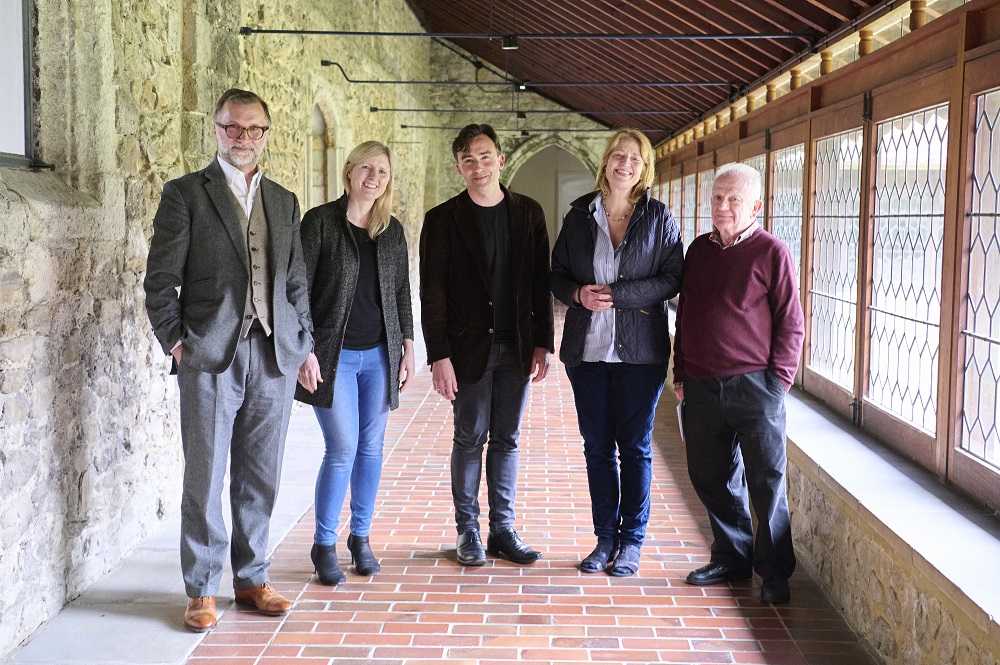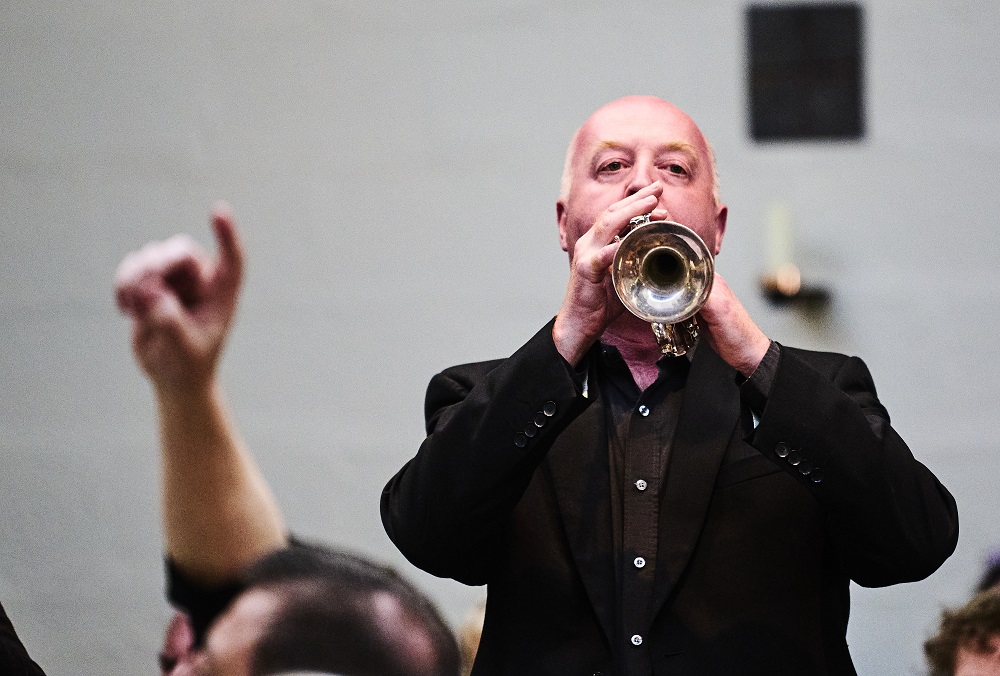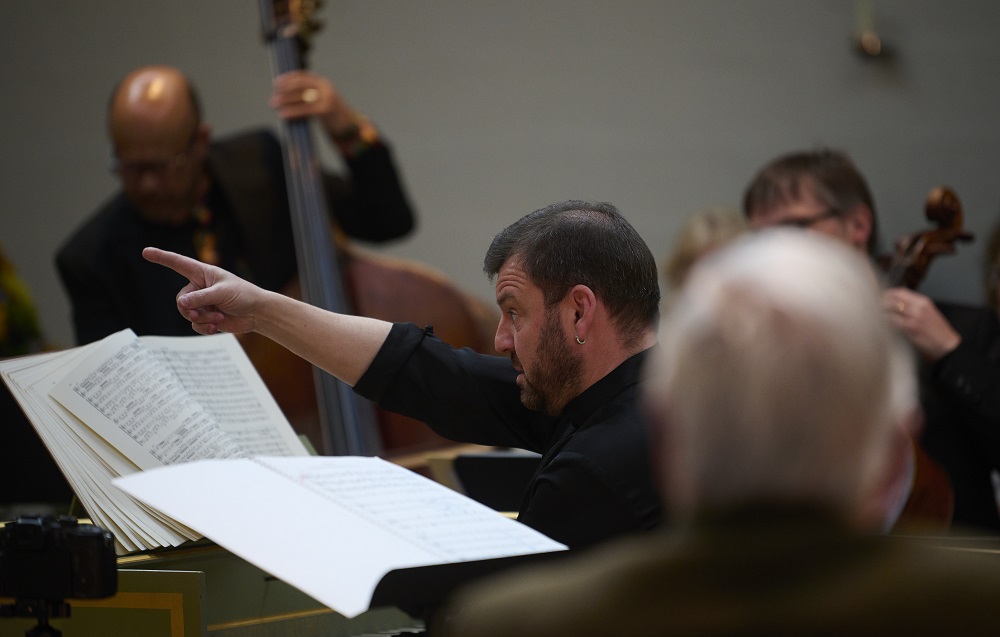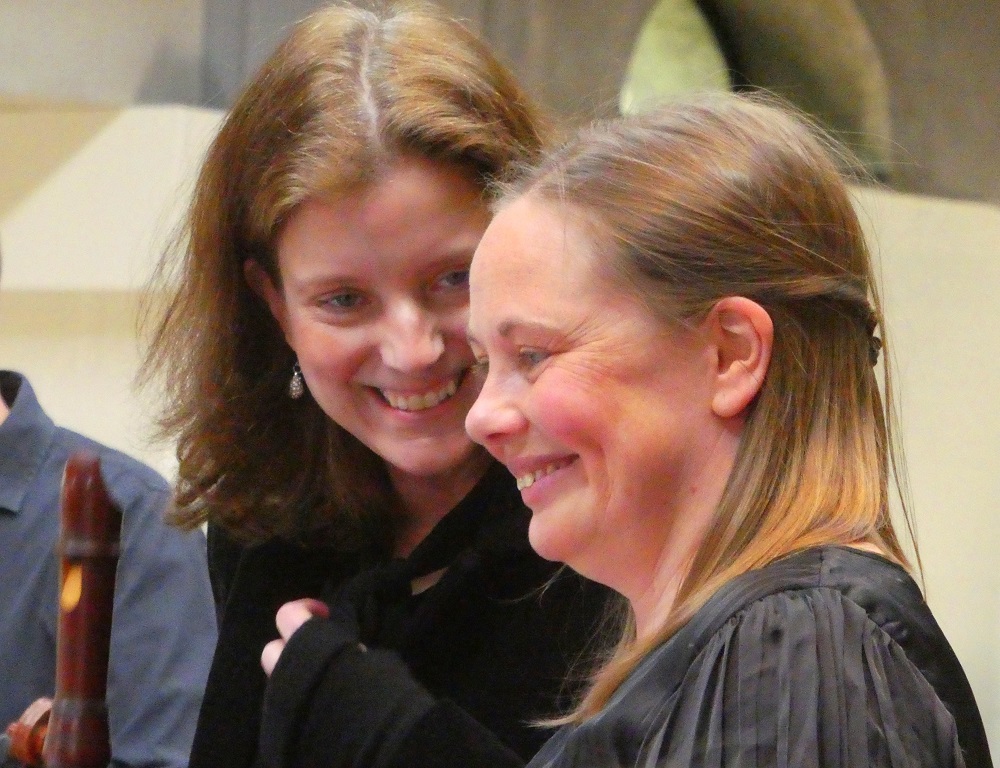Six Brandenburgs: Six Commissions, Chamber Domaine, Malling Abbey review - metaphysical brilliance | reviews, news & interviews
Six Brandenburgs: Six Commissions, Chamber Domaine, Malling Abbey review - metaphysical brilliance
Six Brandenburgs: Six Commissions, Chamber Domaine, Malling Abbey review - metaphysical brilliance
Bach binds together six equally compelling new works and some of the UK's top players
"Contemporary classical", for want of a better term, works best in concert as a cornucopia of shortish new works offering a healthy range of styles and voices. Add to the mix six of the most exhilarating and original chamber concertos ever, by no means casting complementary premieres in the shade, put together some of the UK’s best musicians and make it an afternoon marathon taking place in the round aatn extraordinary venue, and success should be total.
And it was, on Saturday from noon to 5.30pm, in the exquisite surroundings of Malling Abbey The idea isn't unprecedented: the Swedish Chamber Orchestra initiated the six-Bach-six-new format back in 2015, originating the project in its home town of Örebro, where in a hall with disappointingly plummy acoustics I heard the first two ventures including phenomenal trumpeter Håkan Hardenberger in Steve Mackey's Triceros, and presenting the full results in two Proms three years later. Theartsdesk's Sebastian Scotney found them way too long, and noted that, despite the distinguished roster of composers, some of the new works "seemed to outstay their welcome, with people walking out." 
Brian Elias, an outstanding figure in contemporary music regularly featured in West Malling, may have served up the grittiest work in the most oblique tribute, Sequel, to the First Brandenburg Concerto; the harmonic language more angsty than anything Bach might have envisaged, but the essence of the dance very much intact to hold the interest, and some exquisite writing for individual instruments (especially for the bassoon, so well played by Sarah Burnett before she and the oboists bowed out of the day's proceedings). In pure, diatonic contast came The Malling Diamond by Michael Price, who wrote about composition of the work so lucidly last week on theartsdesk (there is no disparagement at all in mentioning that this engaging musical chameleon, also a fine pianist, is the composer of the very catchy score to the BBC's Sherlock). He had the considerable incentive of writing for the trumpet which plays such a wondrous part in the Second Brandenburg Concerto, bringing it to the high-wire fore in the second of The Malling Diamond's two slower sections. 
Two of the new works paid homage to the ecclesiastical setting. Daniel Kidane's compelling Concerto Grosso feeds a chorale between livelier lines (and produced the most original sounds of the day, the twitchings of harpsichord and two recorders against more sustained lines). Stevie Wishart had gone straight to the source and the setting for Gold and Precious Silver, asking the Abbey Choir Mistress for a chant, again elaborated by harpsichord echoes of the birdsong which framed the work against the chant using the strings minus violins which are Bach's basis for a concerto which truly rocked under harpsichordist Steven Devine's direction (pictured below by Thomas Bowles, with double-bassist Leon Bosch). There was special refreshment here, with the work being written to fit between the second and third movements of Brandenburg 6. 
There was never a point in any of the three afternoon concerts where you wanted to say "can we get back to Bach, please?" And yet the performances of the original concertos were so utterly compelling that I can only think of describing the outer movement effect as one of metaphysical exhilaration - yes, the soul danced and the body wanted to, but only Bach could transcendentalise the pitch of exuberance in this way. Devine, in addition to reducing us to mirthful wonder at his giddy achievement in the whopping big harpsichord cadenza of No. 4, projected the right propulsive energy as Bach director. Tom Piggot-Smith gave a robust injection of individual freedom into his various violin solos. 
rating
Explore topics
Share this article
The future of Arts Journalism
You can stop theartsdesk.com closing!
We urgently need financing to survive. Our fundraising drive has thus far raised £49,000 but we need to reach £100,000 or we will be forced to close. Please contribute here: https://gofund.me/c3f6033d
And if you can forward this information to anyone who might assist, we’d be grateful.

Subscribe to theartsdesk.com
Thank you for continuing to read our work on theartsdesk.com. For unlimited access to every article in its entirety, including our archive of more than 15,000 pieces, we're asking for £5 per month or £40 per year. We feel it's a very good deal, and hope you do too.
To take a subscription now simply click here.
And if you're looking for that extra gift for a friend or family member, why not treat them to a theartsdesk.com gift subscription?
more Classical music
 Jansen, LSO, Pappano, Barbican review - profound and bracing emotional workouts
Great soloist, conductor and orchestra take Britten and Shostakovich to the edge
Jansen, LSO, Pappano, Barbican review - profound and bracing emotional workouts
Great soloist, conductor and orchestra take Britten and Shostakovich to the edge
 Jakub Hrůša and Friends in Concert, Royal Opera review - fleshcreep in two uneven halves
Bartók kept short, and a sprawling Dvořák choral ballad done as well as it could be
Jakub Hrůša and Friends in Concert, Royal Opera review - fleshcreep in two uneven halves
Bartók kept short, and a sprawling Dvořák choral ballad done as well as it could be
 Hadelich, BBC Philharmonic, Storgårds, Bridgewater Hall, Manchester review - youth, fate and pain
Prokofiev in the hands of a fine violinist has surely never sounded better
Hadelich, BBC Philharmonic, Storgårds, Bridgewater Hall, Manchester review - youth, fate and pain
Prokofiev in the hands of a fine violinist has surely never sounded better
 Monteverdi Choir, ORR, Heras-Casado, St Martin-in-the-Fields review - flames of joy and sorrow
First-rate soloists, choir and orchestra unite in a blazing Mozart Requiem
Monteverdi Choir, ORR, Heras-Casado, St Martin-in-the-Fields review - flames of joy and sorrow
First-rate soloists, choir and orchestra unite in a blazing Mozart Requiem
 Cho, LSO, Pappano, Barbican review - finely-focused stormy weather
Chameleonic Seong-Jin Cho is a match for the fine-tuning of the LSO’s Chief Conductor
Cho, LSO, Pappano, Barbican review - finely-focused stormy weather
Chameleonic Seong-Jin Cho is a match for the fine-tuning of the LSO’s Chief Conductor
 Classical CDs: Shrouds, silhouettes and superstition
Cello concertos, choral collections and a stunning tribute to a contemporary giant
Classical CDs: Shrouds, silhouettes and superstition
Cello concertos, choral collections and a stunning tribute to a contemporary giant
 Appl, Levickis, Wigmore Hall review - fun to the fore in cabaret and show songs
A relaxed evening of light-hearted fare, with the accordion offering unusual colours
Appl, Levickis, Wigmore Hall review - fun to the fore in cabaret and show songs
A relaxed evening of light-hearted fare, with the accordion offering unusual colours
 Lammermuir Festival 2025, Part 2 review - from the soaringly sublime to the zoologically ridiculous
Bigger than ever, and the quality remains astonishingly high
Lammermuir Festival 2025, Part 2 review - from the soaringly sublime to the zoologically ridiculous
Bigger than ever, and the quality remains astonishingly high
 BBC Proms: Ehnes, Sinfonia of London, Wilson review - aspects of love
Sensuous Ravel, and bittersweet Bernstein, on an amorous evening
BBC Proms: Ehnes, Sinfonia of London, Wilson review - aspects of love
Sensuous Ravel, and bittersweet Bernstein, on an amorous evening
 Presteigne Festival 2025 review - new music is centre stage in the Welsh Marches
Music by 30 living composers, with Eleanor Alberga topping the bill
Presteigne Festival 2025 review - new music is centre stage in the Welsh Marches
Music by 30 living composers, with Eleanor Alberga topping the bill
 Lammermuir Festival 2025 review - music with soul from the heart of East Lothian
Baroque splendour, and chamber-ensemble drama, amid history-haunted lands
Lammermuir Festival 2025 review - music with soul from the heart of East Lothian
Baroque splendour, and chamber-ensemble drama, amid history-haunted lands
 BBC Proms: Steinbacher, RPO, Petrenko / Sternath, BBCSO, Oramo review - double-bill mixed bag
Young pianist shines in Grieg but Bliss’s portentous cantata disappoints
BBC Proms: Steinbacher, RPO, Petrenko / Sternath, BBCSO, Oramo review - double-bill mixed bag
Young pianist shines in Grieg but Bliss’s portentous cantata disappoints

Add comment